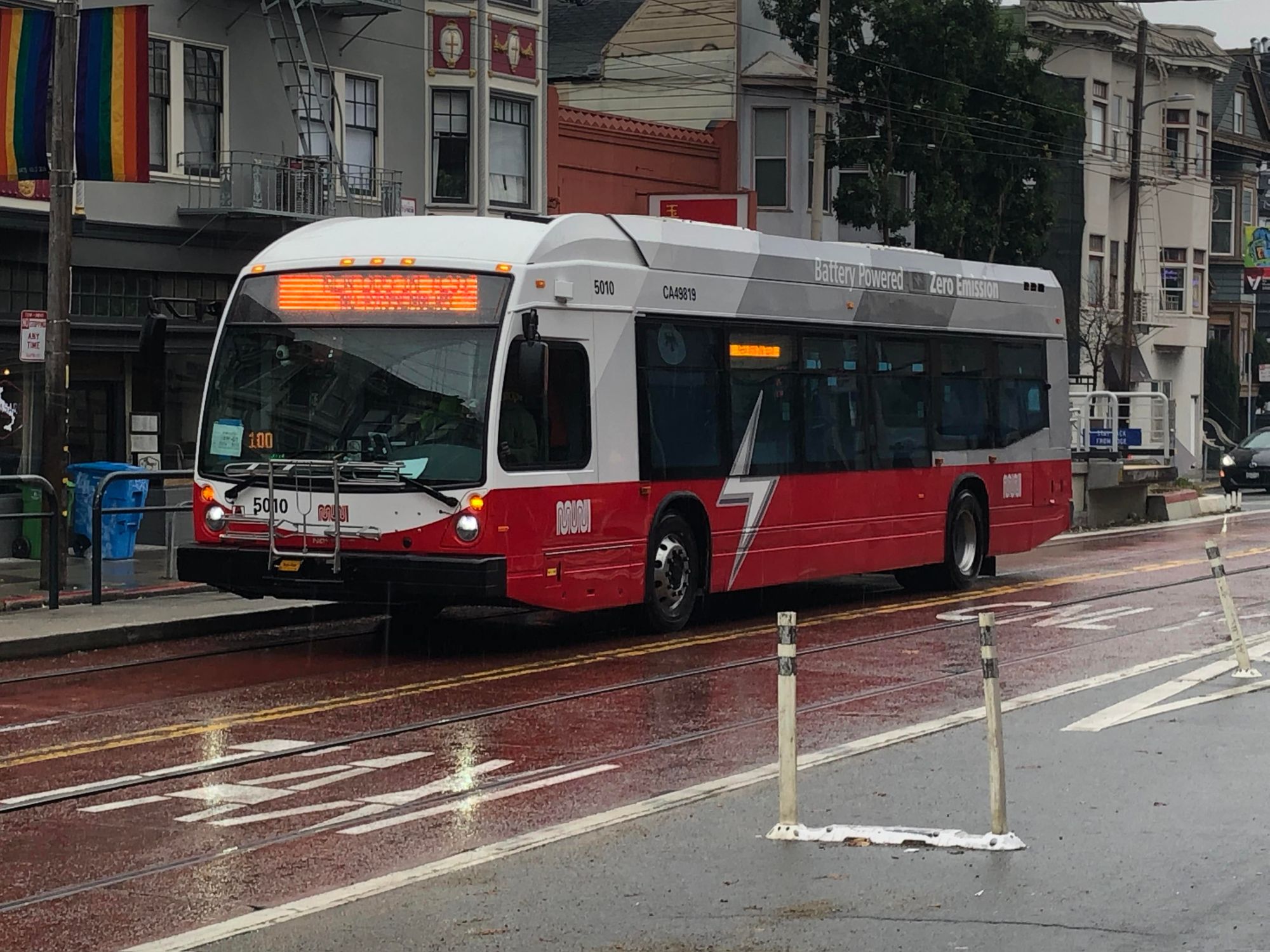Hydrogen Or Battery Electric Buses: Which Is Best For Europe?

Table of Contents
Battery Electric Buses in Europe: Advantages and Disadvantages
Battery electric buses (BEBs) represent a mature technology rapidly gaining traction across Europe. Their advantages are numerous, but limitations remain.
Advantages:
- Lower Initial Cost: BEBs generally have a lower upfront cost compared to hydrogen buses, making them a more accessible option for many municipalities, especially those with tighter budgets. This affordability is a major driver of their current widespread adoption.
- Established Charging Infrastructure: Many European cities already possess a developing network of charging infrastructure, making the integration of BEBs relatively straightforward. This existing infrastructure reduces the significant capital investment required for hydrogen refueling stations.
- Proven Technology: BEB technology is well-established, with a wide range of models and suppliers available. This maturity translates to greater reliability and easier maintenance.
- Lower Operational Costs (in many cases): The operational costs of BEBs, particularly electricity costs, can be lower than those of hydrogen buses, especially in regions with abundant renewable energy sources. This cost-effectiveness is a key factor in their economic viability.
- Greater Energy Efficiency (in some applications): In certain operating conditions and vehicle designs, BEBs can demonstrate higher energy efficiency compared to hydrogen buses.
- Successful Deployments: Several European cities, including Amsterdam, London, and Hamburg, have successfully deployed large fleets of battery electric buses, demonstrating their practicality and effectiveness in real-world scenarios.
Disadvantages:
- Limited Range: Compared to hydrogen buses, BEBs typically have a shorter range, limiting their suitability for routes with long distances or infrequent charging opportunities. This range constraint necessitates careful route planning and sufficient charging infrastructure.
- Longer Refueling Times: Charging BEBs takes significantly longer than refueling hydrogen buses, potentially leading to downtime and reduced operational efficiency. This longer charging time presents a challenge for high-frequency services.
- Grid Dependency: BEBs rely heavily on the electricity grid, raising concerns about the sustainability of their operation if the electricity isn't sourced from renewable energy. This dependence necessitates a focus on renewable energy integration within the electricity grid.
- Battery Lifecycle and Disposal: The lifecycle of batteries and their eventual disposal represent significant environmental and economic challenges. Sustainable battery recycling and responsible end-of-life management are crucial considerations.
- Higher Weight: The weight of battery packs can impact the overall energy efficiency of BEBs, particularly in challenging terrain or demanding operational conditions.
- Operational Challenges: European operators have faced challenges including range anxiety in certain contexts, uneven charging infrastructure availability across regions, and the need for skilled technicians for battery maintenance and repair.
Hydrogen Buses in Europe: Advantages and Disadvantages
Hydrogen fuel cell buses (HFCBs) offer an alternative approach to sustainable public transport, with their own set of advantages and drawbacks.
Advantages:
- Longer Range: HFCBs typically boast a significantly longer range compared to BEBs, making them suitable for longer routes and areas with limited charging infrastructure. This extended range addresses one of the primary limitations of BEBs.
- Faster Refueling Times: Refueling a hydrogen bus is much faster than charging a battery electric bus, minimizing downtime and maximizing operational efficiency. This quick refueling time is a major advantage for high-frequency services.
- Potential for Carbon-Neutral Operation: With the use of green hydrogen produced from renewable energy sources, HFCBs can achieve carbon-neutral operation, significantly reducing their environmental impact. This potential for carbon neutrality is a powerful selling point.
- Reduced Strain on Electricity Grid: Unlike BEBs, HFCBs do not place significant strain on the electricity grid, as hydrogen production can occur remotely and independently. This independence from the grid is a crucial factor in areas with limited grid capacity.
- Geographic Advantages: In sparsely populated regions or areas with challenging terrain, the longer range and faster refueling of hydrogen buses offer distinct advantages over battery electric options.
Disadvantages:
- Higher Initial Cost: The initial cost of HFCBs and the necessary refueling infrastructure is considerably higher than that of BEBs, representing a major barrier to wider adoption. This higher upfront cost requires significant investment.
- Limited Refueling Infrastructure: The scarcity of hydrogen refueling stations across Europe is a critical constraint, limiting the practical deployment of HFCBs. The lack of infrastructure is a significant hurdle to overcome.
- Challenges in Green Hydrogen Production: Producing green hydrogen at scale and cost-effectively remains a significant technological and economic challenge. The cost and scalability of green hydrogen production directly impact the economic viability of HFCBs.
- Lower Energy Efficiency (in some scenarios): In specific applications, HFCBs can demonstrate lower overall energy efficiency compared to BEBs due to energy losses in hydrogen production, storage, and conversion.
- Safety Concerns: Concerns surrounding hydrogen storage, handling, and potential safety hazards require careful consideration and stringent safety protocols. Addressing these safety concerns is crucial for public acceptance.
- Current Adoption Hurdles: The high initial investment costs, lack of widespread refueling infrastructure, and relatively immature technology compared to BEBs are hindering the wider adoption of hydrogen buses across Europe.
Infrastructure and Policy Considerations for Both Technologies in Europe
The successful transition to sustainable buses in Europe requires a coordinated approach involving infrastructure development and supportive policies.
- Government Incentives: Generous subsidies and tax breaks are essential to incentivize the adoption of both BEBs and HFCBs. Financial support is vital for making these technologies economically competitive.
- Infrastructure Development: Significant investment is needed to expand charging infrastructure for BEBs and, more critically, to establish a widespread network of hydrogen refueling stations for HFCBs. This infrastructure development is a prerequisite for widespread adoption.
- Energy Policy Impact: National and regional energy policies significantly influence the cost-effectiveness of both technologies. Policies promoting renewable energy sources are crucial for reducing the carbon footprint of BEBs and enabling the production of green hydrogen.
- Grid Capacity: The increasing demand for electricity from BEBs necessitates upgrades to grid capacity and smart grid technologies to manage the increased load. Grid modernization is a vital element of successful BEB integration.
- Regulatory Frameworks: Harmonized regulatory frameworks across different European nations are needed to simplify the procurement, deployment, and operation of sustainable buses. Consistent regulations across the continent are essential. Examples of differing regulations can include licensing requirements for hydrogen vehicles and the standards for battery electric bus charging.
Comparative Life Cycle Analysis: Environmental Impact
A comprehensive life cycle assessment (LCA) is crucial for evaluating the environmental impact of both BEBs and HFCBs.
- Well-to-Wheel Emissions: The well-to-wheel emissions for both technologies must be considered, taking into account the energy sources used in electricity generation for BEBs and the methods employed in hydrogen production for HFCBs. Green hydrogen production is essential for minimizing the overall environmental impact of HFCBs.
- Battery and Hydrogen Production: The environmental impact of battery and hydrogen production, including resource extraction, manufacturing processes, and waste generation, needs to be thoroughly analyzed. Sustainable manufacturing practices are crucial to minimize the environmental footprint of both technologies.
- Lifecycle Emissions: A complete LCA must assess the lifecycle emissions of both bus types, encompassing manufacturing, operation, and end-of-life disposal or recycling. This holistic approach is vital for a comprehensive environmental comparison.
- Reputable Studies: Data and comparisons from reputable LCA studies should inform the analysis, providing objective evidence to support the conclusions. Reliable data and transparent methodologies are essential for accurate assessment.
- Key LCA Findings: Key findings from lifecycle assessment studies consistently highlight the significant role of electricity and hydrogen production methods in determining the overall environmental impact of both BEBs and HFCBs. The sustainability of the energy sources used heavily influences their relative environmental benefits.
Conclusion: Hydrogen or Battery Electric Buses: Making the Right Choice for Europe's Future
The choice between hydrogen and battery electric buses for Europe's sustainable public transport future isn't a simple one. Both technologies offer significant advantages, but also present substantial challenges. Battery electric buses currently boast lower initial costs and a more developed infrastructure in many areas, while hydrogen buses offer the potential for longer range and faster refueling, particularly advantageous in specific contexts.
The "best" option strongly depends on local factors: geography, existing energy infrastructure, the availability of renewable energy sources, and regional policy incentives. A balanced approach, recognizing the potential of both technologies and their respective strengths in different situations, is necessary.
Further research, significant investment in infrastructure development, and supportive policy frameworks are crucial for enabling the successful transition to sustainable bus fleets across Europe. Let's continue this vital discussion – share your thoughts and perspectives on which technology you believe holds the most promise for Europe's future of sustainable public transport. The future of green buses depends on informed decisions and collaborative efforts.

Featured Posts
-
 Pocivaj V Miru Slovesnost In Spomin
May 07, 2025
Pocivaj V Miru Slovesnost In Spomin
May 07, 2025 -
 Terapia Y Rendimiento Deportivo La Experiencia De Simone Biles
May 07, 2025
Terapia Y Rendimiento Deportivo La Experiencia De Simone Biles
May 07, 2025 -
 Ovechkins Pre Pittsburgh Trip Lucky Sub Cheetos And Superstition
May 07, 2025
Ovechkins Pre Pittsburgh Trip Lucky Sub Cheetos And Superstition
May 07, 2025 -
 The End Of Spectre Divide Mountaintop Studios Studio Closure Announcement
May 07, 2025
The End Of Spectre Divide Mountaintop Studios Studio Closure Announcement
May 07, 2025 -
 The Met Gala 2025 Show Stopping Fashion On The Red Carpet
May 07, 2025
The Met Gala 2025 Show Stopping Fashion On The Red Carpet
May 07, 2025
Latest Posts
-
 Fettermans Fitness For Office Counterpoint To Ny Magazine Article
May 08, 2025
Fettermans Fitness For Office Counterpoint To Ny Magazine Article
May 08, 2025 -
 Proposed Doj Changes Could Severely Damage User Trust In Google Search
May 08, 2025
Proposed Doj Changes Could Severely Damage User Trust In Google Search
May 08, 2025 -
 Senator Fettermans Health A Response To Recent Ny Magazine Allegations
May 08, 2025
Senator Fettermans Health A Response To Recent Ny Magazine Allegations
May 08, 2025 -
 Second Us Navy Jet Lost At Sea Another Aircraft Down From Truman Carrier
May 08, 2025
Second Us Navy Jet Lost At Sea Another Aircraft Down From Truman Carrier
May 08, 2025 -
 Papal Conclave Cardinals Weigh Candidate Dossiers
May 08, 2025
Papal Conclave Cardinals Weigh Candidate Dossiers
May 08, 2025
